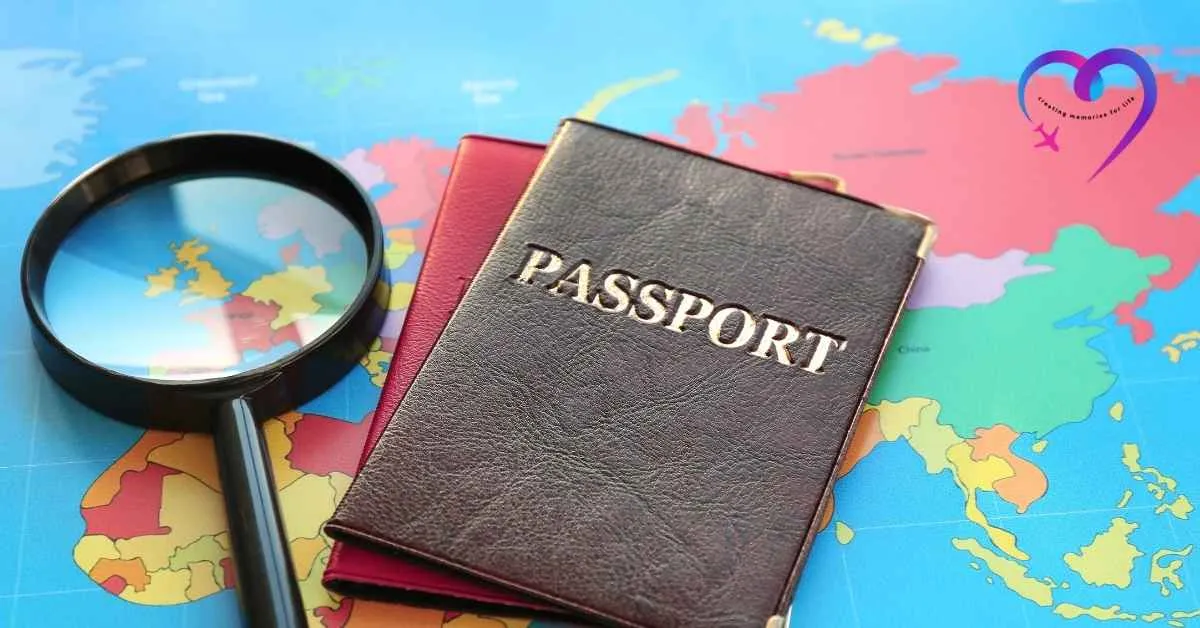Traveling the world is a dream for many, and having a U.S. passport can make this dream much easier to achieve. With access to 186 countries without the need for a pre-arranged visa, U.S. passport holders enjoy significant travel freedom. However, there are still a few Countries where US passport holders can’t visit because entry is restricted or outright banned for American travellers. This blog explores these countries and the reasons behind these restrictions.
Understanding Travel Restrictions
Political and Diplomatic Tensions
Political and diplomatic tensions are often at the heart of travel restrictions. When two countries have strained relations, it can lead to increased scrutiny, stringent visa requirements, or outright bans on travel. For instance, the U.S. and Iran have had a complicated relationship for decades, which has resulted in limited diplomatic interactions and difficulties for U.S. citizens seeking to travel to Iran. Similarly, the ongoing tensions between North Korea and the U.S. have led to a strict travel ban for Americans wishing to visit North Korea.
Security Concerns
Security concerns play a significant role in the imposition of travel restrictions. Countries experiencing civil unrest, terrorism, or other forms of violence may be deemed unsafe for travelers. The U.S. Department of State frequently updates travel advisories to reflect these risks. For example, Syria and Yemen are currently under Level 4 “Do Not Travel” advisories due to the high risk of kidnapping, terrorist attacks, and armed conflict. These advisories are in place to protect U.S. citizens from potential harm.
How to Stay Informed About Travel Restrictions
Checking the U.S. Department of State Website
The U.S. Department of State’s website is a critical resource for travellers. It provides up-to-date travel advisories, safety information, and specific entry requirements for each country. By regularly checking this site, travelers can stay informed about any changes in travel restrictions and make informed decisions about their travel plans. The website also offers detailed information on what to do in case of an emergency while abroad.
Using Travel Advisory Apps
Several travel advisory apps can provide real-time updates on travel restrictions and safety information. Apps like Smart Traveler, TripIt, and TravelSafe offer features such as country-specific alerts, travel advisories, and safety tips. These tools can be invaluable for travelers who want to stay informed about potential risks and restrictions on the go.
Preparing for Travel to High-Risk Countries
Necessary Precautions
When planning to visit high-risk countries, it’s crucial to take specific precautions. Register with the U.S. Department of State’s Smart Traveler Enrollment Program (STEP) to receive updates and allow the embassy to contact you in an emergency. Ensure you have comprehensive travel insurance that covers medical expenses, trip cancellations, and evacuations. Always have a well-thought-out emergency plan, including contact details for local embassies and consulates.
Emergency Contacts and Resources
Having access to emergency contacts and resources is vital when traveling to high-risk areas. Know the location and contact information of the nearest U.S. embassy or consulate. Keep a list of local emergency numbers, including police, medical services, and fire departments. It’s also helpful to have contact information for international medical assistance services and local hospitals.
Impact of Travel Restrictions on Tourism
Economic Consequences
Travel restrictions can have significant economic consequences for both the restricted countries and the travelers. Countries that rely heavily on tourism may experience economic downturns when visitors are deterred by safety concerns or travel bans. This can lead to job losses and decreased revenue for local businesses. Conversely, travelers might miss out on unique cultural experiences and destinations due to these restrictions.
Cultural Exchange Limitations
Travel restrictions also limit opportunities for cultural exchange and understanding. When travelers are unable to visit certain countries, they miss the chance to learn about different cultures, traditions, and ways of life. This can lead to a lack of awareness and appreciation for diverse perspectives. Encouraging safe and respectful travel can help bridge cultural gaps and foster mutual understanding.
List of Countries US Passport Holders Can’t Visit in 2024
Before diving into the specifics, I want to include that China and Russia are not on the list of countries you can’t visit with a U.S. passport because, despite existing political tensions and strained diplomatic relations with the United States, both countries still allow entry to U.S. citizens under specific conditions it’s essential to understand the complexities and restrictions surrounding travel to certain countries. Here are the list of Countries US Passport Holders Can’t Visiti in 2024.

1. North Korea
North Korea remains one of the most inaccessible countries for U.S. passport holders. In 2017, the U.S. Department of State imposed a travel ban on U.S. citizens traveling to North Korea due to serious risks of arrest and long-term detention. This ban has been extended multiple times and remains in effect as of 2024. Exceptions to this ban are rare and typically only granted for specific humanitarian reasons.
2. Syria
Travel to Syria is strongly discouraged due to the ongoing civil war and severe security concerns. The U.S. Department of State has a Level 4 “Do Not Travel” advisory for Syria. U.S. citizens need to obtain a visa in advance to enter Syria, but obtaining one can be very difficult due to the lack of diplomatic relations between the two countries. The risk of kidnapping, terrorism, and military conflict makes Syria a highly dangerous destination for Americans.
3. Iran
Iran has a complex relationship with the United States, making it challenging for U.S. citizens to visit. Americans must apply for a visa in advance, and tourist visas are seldom granted. Additionally, travelers need to be part of an organized tour and accompanied by a government-approved guide throughout their stay. The political climate and ongoing tensions between the two countries contribute to the difficulties in securing a visa.
4. Libya
Libya is another country where U.S. citizens face significant travel restrictions. The U.S. Department of State advises against travel to Libya due to crime, terrorism, civil unrest, and armed conflict. Visas are required for entry, but obtaining one is challenging given the current political instability and lack of a functioning government.
5. Yemen
Yemen is experiencing a severe humanitarian crisis and ongoing conflict, making it a highly dangerous place for travelers. The U.S. Department of State has issued a Level 4 “Do Not Travel” advisory for Yemen. U.S. citizens must obtain a visa in advance, but due to the dire security situation and the closure of many diplomatic missions, getting a visa is nearly impossible.
6. Venezuela
While not entirely restricted, travel to Venezuela for U.S. citizens requires careful planning. Due to political tensions and security concerns, the U.S. Department of State has a Level 4 “Do Not Travel” advisory for Venezuela. U.S. citizens need a visa to enter the country, and the process can be complicated by strained diplomatic relations and frequent changes in visa requirements.
7. Sudan
Travel to Sudan requires a visa, and the country has been plagued by political instability and conflict. The U.S. Department of State advises against travel to certain areas of Sudan due to the risk of terrorism and civil unrest. Obtaining a visa can be difficult, and travelers must be cautious and well-prepared if they decide to visit.
Alternative Travel Destinations
Safe and Welcoming Countries in the Middle East
While some Middle Eastern countries are challenging to visit, others are very welcoming to U.S. travelers. Countries like the United Arab Emirates (UAE), Jordan, and Oman are known for their hospitality, rich cultural heritage, and safety. The UAE, in particular, offers a blend of modernity and tradition, making cities like Dubai and Abu Dhabi popular tourist destinations. Jordan’s Petra and Wadi Rum are must-visit historical and natural sites, and Oman’s scenic landscapes and friendly locals make it an appealing destination.
Exploring Muslim-Friendly Destinations in Asia
Asia offers numerous Muslim-friendly destinations that provide rich cultural experiences. Malaysia, Indonesia, and Turkey are top choices for Muslim travelers. Malaysia’s capital, Kuala Lumpur, is known for its halal food, mosques, and Islamic heritage sites. Indonesia, the world’s largest Muslim-majority country, offers beautiful landscapes and vibrant culture, especially in cities like Jakarta and Yogyakarta. Turkey, straddling Europe and Asia, is home to iconic landmarks like the Hagia Sophia and the Blue Mosque in Istanbul.
Personal Stories from Travelers
Experiences in Restricted Countries
Hearing personal stories from travelers who have visited restricted countries can provide valuable insights. For example, some travelers who visited Iran as part of an organized tour have shared their experiences of the rich culture, history, and hospitality of the Iranian people despite the political tensions. Such stories can offer a more nuanced perspective and highlight the importance of understanding local contexts.
Lessons Learned and Advice
Travelers who have navigated travel restrictions often have useful advice to share. Common lessons include the importance of thorough research, the benefits of traveling with reputable tour operators, and the need for flexibility in travel plans. These travelers often emphasize the importance of respecting local customs and regulations to ensure a safe and respectful visit.
Future Prospects for Travel
Potential Changes in Diplomatic Relations
Diplomatic relations between countries are always evolving, and future changes could alter current travel restrictions. For example, if diplomatic relations improve between the U.S. and a restricted country, it might become easier for U.S. citizens to visit. Staying informed about international politics and potential diplomatic shifts can help travelers anticipate changes in travel opportunities.
Emerging Safe Destinations
As global safety dynamics shift, new safe destinations for U.S. travelers may emerge. Countries that were once considered high-risk may become more stable and welcoming to tourists. Keeping an eye on emerging destinations can provide exciting travel opportunities and allow travelers to explore new parts of the world.
Other Considerations
While the countries listed above are among the most challenging for U.S. passport holders to visit, it’s essential to stay informed about global travel advisories. Political climates and diplomatic relations can change, potentially opening or closing borders to American travelers.
Conclusion
Traveling with a U.S. passport offers remarkable freedom, but it’s important to be aware of the few destinations where entry is restricted or dangerous. Countries like North Korea, Syria, Iran, Libya, Yemen, Venezuela, and Sudan pose significant challenges for American travelers due to political tensions, security risks, and complex visa processes. By understanding the complexities and restrictions of travel to these countries, you can better prepare for safe and enjoyable international adventures. Always check the latest travel advisories from the U.S. Department of State before planning any trips to ensure your safety and compliance with entry requirements.




